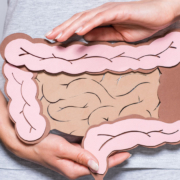What It’s Like to Have a Colonoscopy
A colonoscopy is a procedure designed to examine your colon, and for that to happen effectively, the colon must be clear of all food and waste material. Based on my personal experience as well as Paula’s, the preparation for the colonoscopy is infinitely worse than the actual colonoscopy. There are several medical websites that will give you details of the procedure complete with diagrams and video. That’s not my purpose in this Memo, so there will be none of that sh*t here (sorry, I couldn’t resist).
The Colonoscopy Preparation
Preparing for a colonoscopy requires that you consume no solid food for 24 to 36 hours before the procedure. What you consume are laxatives and fluids designed to completely empty your colon. The reason is simple: if there’s any waste material in the colon, the physician won’t be able to see the lining of this organ and thereby will be unable to examine its health.
The best way to describe the prep is to take the worst case of diarrhea you’ve had and multiply it times three. You won’t necessarily have the cramping that goes along with a bacterial or viral infection that causes diarrhea, but soon after you take the laxatives, you will have to visit the bathroom again and again and again—and then again. I’m going to predict that you won’t always make it in time, so be sure you don’t plan to be anywhere but at home close to the bathroom.
But here’s the upside: you can use it as a legitimate colon cleanse because that’s exactly what it is. If you want to reset your digestive system by emptying it completely, a colonoscopy will certainly do that.
The Colonoscopy Procedure
The medications they use today during the colonoscopy are far different from what they used to be. I fell asleep in about two seconds and remember nothing; Paula was semi-awake throughout so she remembers a little. The point of the procedure is to visually inspect the entire length of the colon for abnormalities. The equipment is a long tube with a camera and a secondary tube to add air to the colon to make it easier to inspect. The two most common concerns are polyps and diverticula.
Our Results
My colonoscopy was completely uneventful, but Paula had two columnar polyps that were completely removed to be tested. The lab technologist found no indication of abnormal cells, so she’s in the clear; there are many types of benign polyps, and hers seem to be the most common. What does it mean? It means she’s fine for now but has to do the colonoscopy (and its prep) all over again in five years instead of ten.
The Bottom Line
If you’re serious about taking charge of your health, you have to know its status. A colonoscopy is a part of that process as we get older or if we have genetic tendencies toward colon cancer. I understand the personal nature of the procedure. Really, no one wants to see a 15-foot hose and think, “You’re going to put that where?” But it’s another point of taking charge and aging with a vengeance.
If it’s time for you to get it done, don’t delay any further; call your primary care provider and get a referral. Ignorance is not bliss, and it has no place in Aging with a Vengeance.
What are you prepared to do today?






